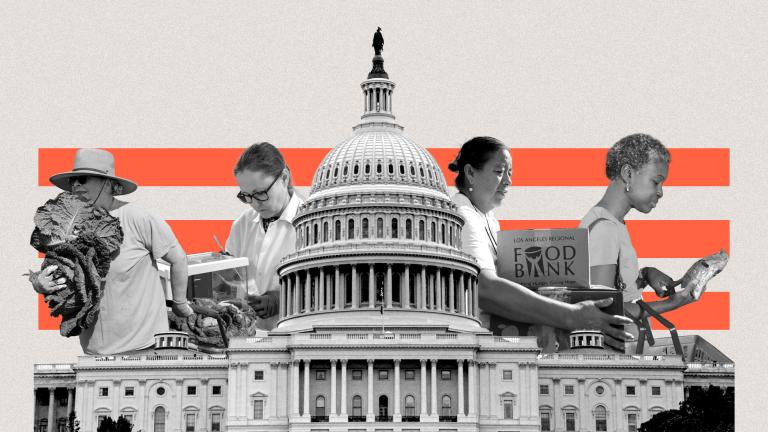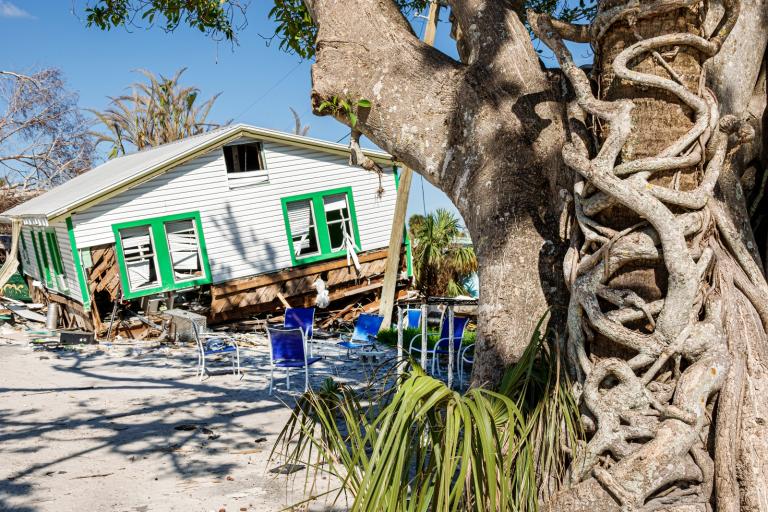This story was supported by the Economic Hardship Reporting Project.
As mobile home owners fight rising housing costs, some of them have hit upon a solution that also helps in the fight against climate change: banding together and buying the land underneath their homes.
This model of collective ownership, also called resident-owned communities or ROCs, is on the rise. The number of mobile homes attached to a resident-owned community grew from just over 200 in 2000 to more than 15,000 in 2019, according to a 2022 study from researchers at Berkeley, Cornell, and MIT.
When residents own the land, they can move more quickly to upgrade infrastructure. That’s where climate change comes in. Renewables — especially solar — work uniquely well with these types of places, according to Kevin Jones, director at the Institute for Energy and the Environment at the Vermont Law and Graduate School.
“There’s nothing more perfect than these resident-owned communities because they already have a cooperative structure and, generally, commonly own the piece of land,” said Jones. “[They] are just kind of natural communities to be able to bring the benefits of solar to more low- to moderate-income people.”
Mobile home parks — often a misnomer, because many homes are anchored to the ground — house more than 22 million Americans and provide a vital form of housing amidst a nationwide housing crisis.
Often, private landlords will delay vital upgrades but continue to collect lot rents, which pay not for the actual property which the resident could rent or own but for the land underneath it. This can result in a system where many owners invest thousands of dollars into paying off their home, but are still beholden to the park owner for lot rents and other fees.
The problem of displacement has been exacerbated in the past decades by private equity’s foray into mobile home park ownership, which often leads to higher increases for rent, utilities, and other fees while conditions either stay mostly the same or worsen.
Nonprofit organizations like ROCUSA have been essential to providing communities with resources such as low or interest-free loans, grants, and the essential planning knowledge needed to create a co-op.
The organization does more than help individual co-ops, it also helps connect people in a vast network of co-ops so they can share resources and knowledge. This process can help immensely when considering, for example, the prolonged process of acquiring a permit for a solar array or which contractors to use to install heat pumps in residences.
Ronald Palmer knows all about the process of installing solar in a co-op. As board president for Lakeville Village in Geneseo, New York, he helped his community navigate the lengthy process. It was one of the first solar projects in the upstate town of Geneseo, with a population around 7,000 people.
That community, which comprises 50 homes for people 55 and older, has had a solar array for just over two years now. The benefits from it don’t just help Lakeville Village residents, but also local businesses and other sites.
A large majority of these co-ops are concentrated in the Northeast and Pacific Northwest. One of the reasons for the high number of them in states like New Hampshire is access to state-specific resources, according to Jones.
“The Northeast, you know, clearly is an area where there’s a lot of interest in solar,” said Jones. “We don’t necessarily have the best solar resource in the country, but we have generally good public policies toward solar.”
This allows populations in those areas, including people who live in resident-owned mobile home co-ops, to access the resources needed to set up solar.
In New Hampshire, ROC-NH helps connect communities with state resources and helps prioritize the needs of community members members. These needs are usually related to financial stability, according to Sarah Marchant, Vice President of ROC-NH.
“Our goal when talking about community solar, with residential communities, is not just to reduce their carbon footprint,” said Marchant. “But the way this works is it has to reduce their costs and has to reduce their bills as well.”
This is vital for communities where members might be working two or three different jobs just to stay afloat, according to Marchant.
While the process of forming a co-op and investing in climate-friendly projects is time-consuming, there are many benefits.
In South Texas, a resident-owned community called Pasadena Trails, located just outside of Houston, found a solution to chronic flooding. The predominantly Latino community installed drainage systems, which helped significantly when Hurricane Harvey hit and drenched the Houston area in 60 inches of rain. In the wake of Harvey, Pasadena Trails fared better in comparison to neighboring areas.
Back in New York state, the residents of Lakeville Village are pleased with their solar project, which reflects the values of the older residents, most of whom are grandparents. For them, this solar project was their way of taking care of their own and ensuring a small step in the right direction for future generations.
”We want to reduce our carbon footprint, and one of our concerns was for our grandchildren and their children,” said Palmer. “And we saw this as a way of contributing to that and being responsible grandparents.”
This post has been updated to clarify the number of mobile home units attached to resident-owned communities. It has also been updated to clarify the correct language for identifying resident-owned communities.



